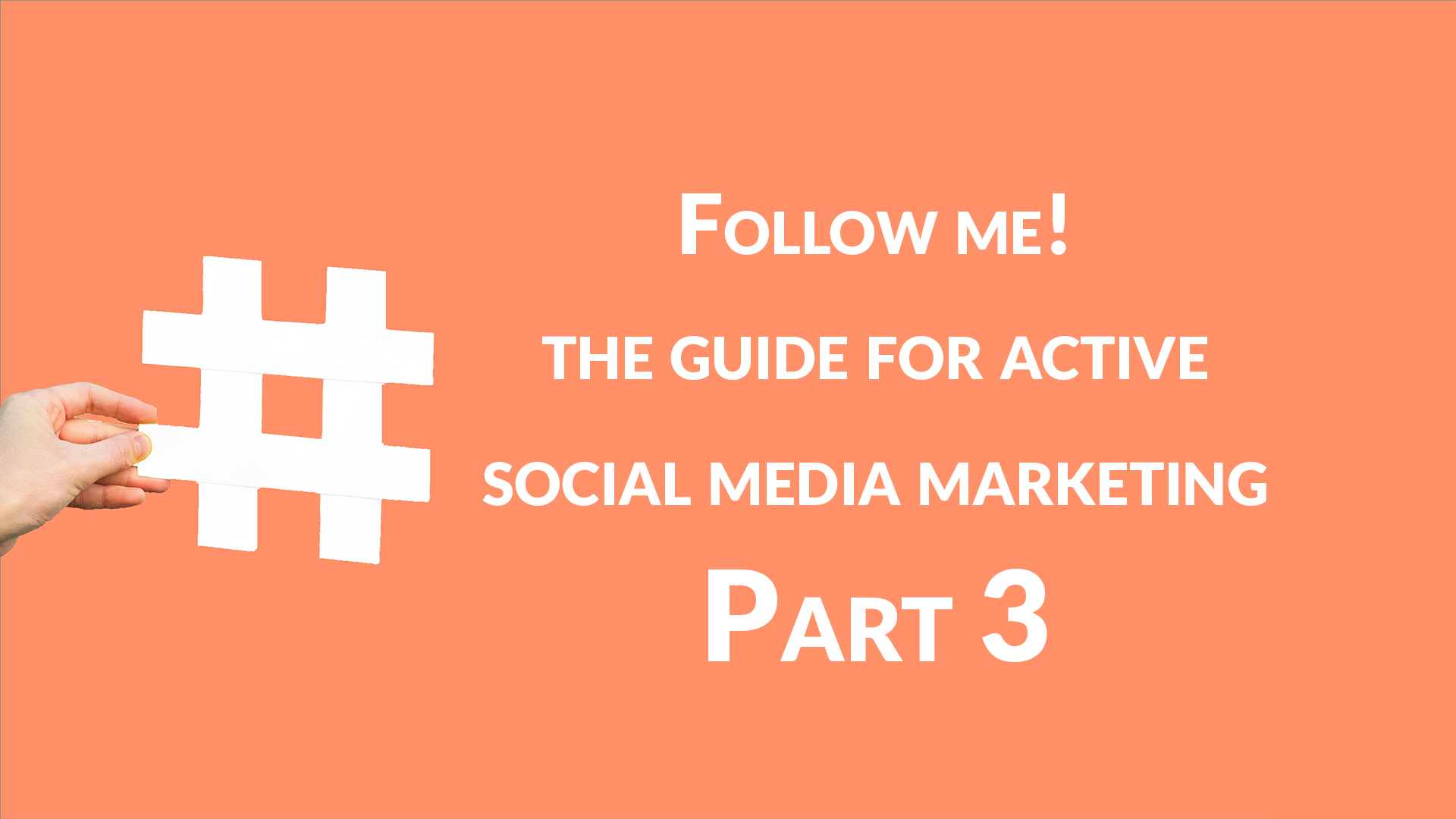Together we fought our way through the Social Media jungle, got to know its areas and inhabitants and thus received the tools for our further expedition. But we also have to learn how to handle them and apply our knowledge strategically. Deep deadline-canyons, raging data-flows and the thicket of the persona-rainforest have to be overcome somehow. A strategy is needed. In seven steps we show you how to find your own way.
We have already analyzed the goals and target group of your Social Media Initiative. Now it's time to get down to business. The Social Media Strategy summarizes these, guides and plans the necessary activities and ultimately enables you to evaluate them – both success and failure. Basically, every activity, from the elaborate video to the two-line post, has a specific purpose. As with your goals, the same applies to the development of the strategy: less is more.
1. Goals in mind, looking at KPIs
Your manager wants to talk about the success of your campaign and its budgeting? This is your moment to shine. We have already explained to you how to formulate S.M.A.R.T. objectives in order to be able to actually achieve them: Not too simple, not too ambitious – the middle ground will do. The inconspicuous letter "M" of the method has an enormous influence on the success of your campaign. The definition of your goals should be "measurable", because even with Social Media it is important to look closely at numbers. And their measurability brings us to another important point, the Key Performance Indicators. Because they go far beyond metrics such as likes, shares and retweets.
2. KPIs that really make a difference
The Canadian social media management platform Hootsuite has defined 19 significant Social Media Key Performance Indicators and also illustrates how you can measure them. Helpful: first of all, the Social Media Funnel is divided into four main customer journey stages:
Perception: KPIs about your existing and potential audience
-
Brand Awareness
-
Audience Growth Rate
-
Post Range
-
Potential Range
-
Social Share of Voice (SSoV)
Engagement: KPIs that show the interaction between target group and content
-
Applause Rate
-
Average Exposure Rate
-
Amplification Rate
-
Virality Rate
Conversion: KPIs to prove the effectiveness of social media activities
-
Conversion Rate
-
Click-through Rate (CTR)
-
Bounce Rate
-
Cost-per-Click (CPC)
-
Cost-per-Mille (CPM)
-
Social Media Conversion Rate
-
Conversation Rate
Consumers: KPIs to reflect how active customers think and feel about your brand
-
Customer Testimonials
-
Customer Satisfaction (CSat) Score
-
Net Promoter Score (NPS)
3. Dig deeper: Getting to the bottom of arget groups
The more data you accumulate, the more accurate you can define your personas. Starting point is demographic data that you can accumulate via Facebook, Twitter and LinkedIn. If you have enough resources, online surveys, focus groups or even interviews with clients are a good option. In part 2 of the series we already came across the jungle dwellers, classified them into generations and divided them into seven subgroups according to their Social Media behaviour. The development of personas is mainly about three things:
- Solid research and analysis of real data
- Intuition
- Creativity
A good example to estimate the effort of a professional persona creation based on customer data are the seven "zTypes" from online retailer Zalando. The e-commerce giant has taken advantage of its enormous database and created new typologies for its target groups: By combining 23 million first-party (own user data) and 31 million Facebook data, Zalando was able to refine the personas down to the smallest detail. Fashion style, music taste and TV series rank on the same level as preferred sneaker brands and social media channels. You think you can't be pigeonholed? You can answer a few questions on the website to see which zType you are.
The important thing when creating personas is to keep expanding or even completely reinventing them. Zalando also constantly explores this subject to create the most accurate typologies.
4. Figuring out where you stand
Before you plunge into the Social Media adventure, you should of course know where you are at the moment. So before you really get started, you should evaluate your current work (if there's any). This can be done by combining an external and internal audit to test your social media fitness.
External audit
-
Customers and Stakeholders: What do your customers and stakeholders think about your brand?
-
Topics: Which topics are mentioned in context with your brand?
-
Mood and tonality: How does the web think about your brand?
-
Competition: What Social Media activities does your competition implement?
-
Existing presence: What does my current Social Media presence look like?
Internal audit
-
Activities of your employees: What experiences have your employees had with Social Media (for your brand)?
-
Expectations: What ideas do employees have about Social Media?
-
Interfaces and processes: Where do service employees already work together with other departments?
-
Internal requirements: What are the internal and technical conditions for Social Media?
5. Create accounts, improve existing profiles
Once you have chosen a channel or network where you are most likely to reach your target audience, you need to start taking action. The first step in this direction is to create or improve your profile.
If you start from scratch, be sure to fill in all the fields in the profile, use relevant keywords and use images that match the channel's size requirements. Poor quality photos and incomplete profile information will look unprofessional and untrustworthy.
Here we have linked instructions from the Social Media management platform Hootsuite for the most relevant Social Media networks for you to help you get started:
If you already have a social media presence, it is worth giving it a little facelift. Hootsuite has also created a short video to show how you can quickly get your profile in shape:
6. Social Media Content Calendar
Of course, the content you are going to create must be distributed through your channels to achieve interaction with your target audience. Sure, you can put any post online manually – but in the long run this won't work, because the time required is far too high. If you want to get the most out of your great content, you need a strategy within strategy, a Social Media Content Calendar.
This is usually a simple Excel document that lists all the dates and times when you want to publish various forms of content evenly and at the most relevant times. To do this, you also need to analyze in which period your target group is online and on which days – this is only possible with regular analysis of your KPIs. You should always keep an eye on the content mix that covers your overall goals. For example, use the "Rule of Thirds" to determine that...
-
⅓ of the content advertises your company,
-
⅓ of the content includes ideas and stories from people who are relevant to the industry,
-
⅓ of the content is the personal interaction with your target group.
7. Test, adapt, optimize
The data that you obtain from the key figures must be subject to constant review in order to continually adapt to your strategy. Think about which content worked particularly well on which platform with which persona, which channel was most successful and whether your goals are still realistic. Because your social media strategy is a continuous cycle in which there is always potential for optimization.
Stay tuned...
Congratulations! Now you know how to plan, measure and customize your social media activities! Of course, all of this is only possible if you produce and publish relevant content. In the next part of the series, we'll return to more practical topics and show you how to create Social Media Posts on the various channels that are perfectly tailored to your target audience.
Sources:
https://blog.hootsuite.com/de/social-media-marketing-plan-erstellen/
https://blog.hootsuite.com/de/aussagekraeftige-social-media-kennzahlen/
https://blog.hootsuite.com/de/zielgruppen-personas-entwickeln/
https://onlinemarketing.de/news/facebook-likes-nutzerverhalten-zalando-datenbasierte-personas-ztypes
https://geschaeftsbericht.zalando.de/2017/magazin/mission-ztypes-das-passende-marketing-fuer-jede-zielgruppe/
Grabs, Anne/Bannour, Karim-Patrick/Vogl, Elisabeth: Follow me! Erfolgreiches Social Media Marketing mit Facebook, Instagram, Pinterest und Co. Bonn: Rheinwerk Verlag. 2019.
Credit: ©khosrork/Adobe Stock


